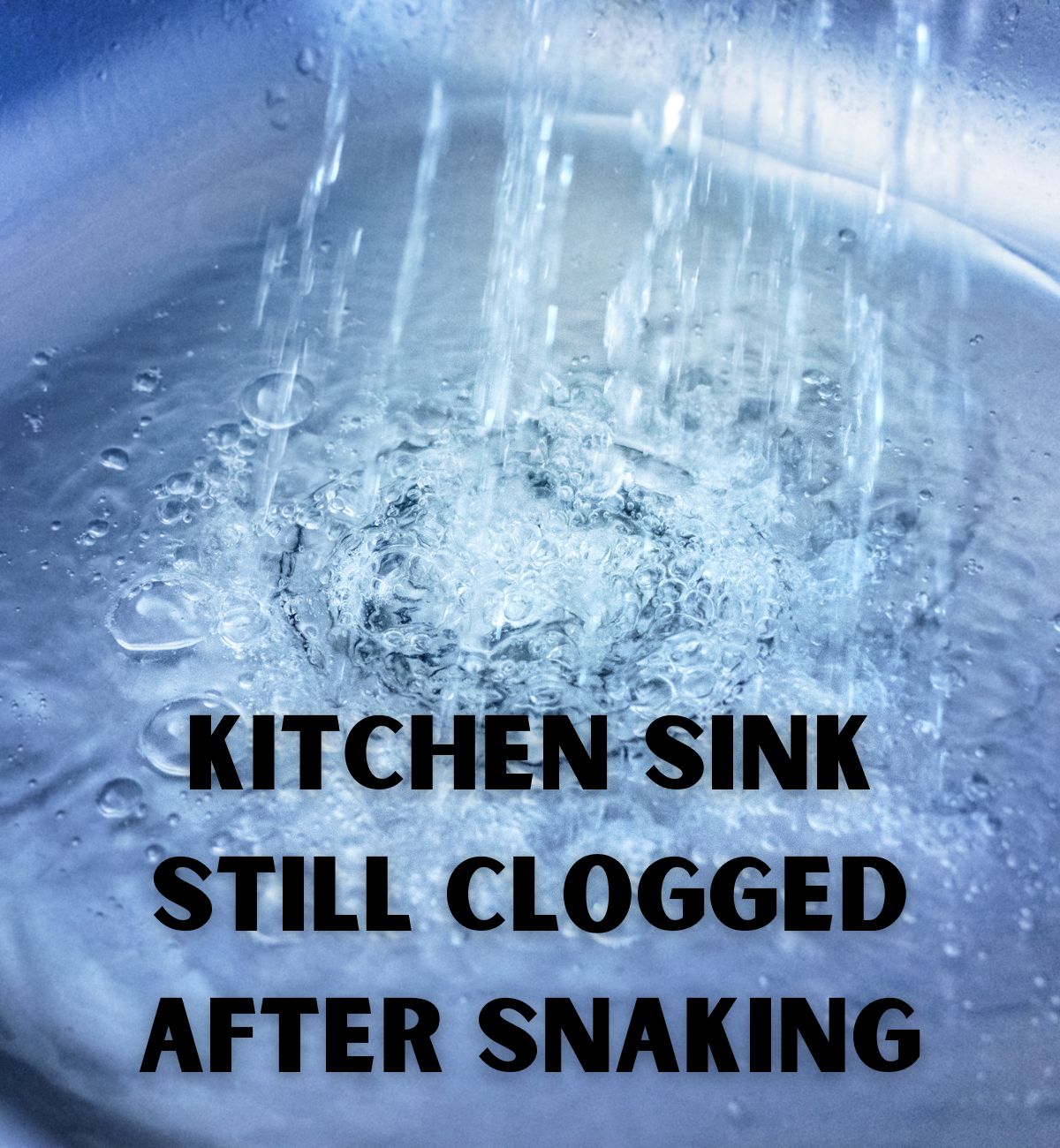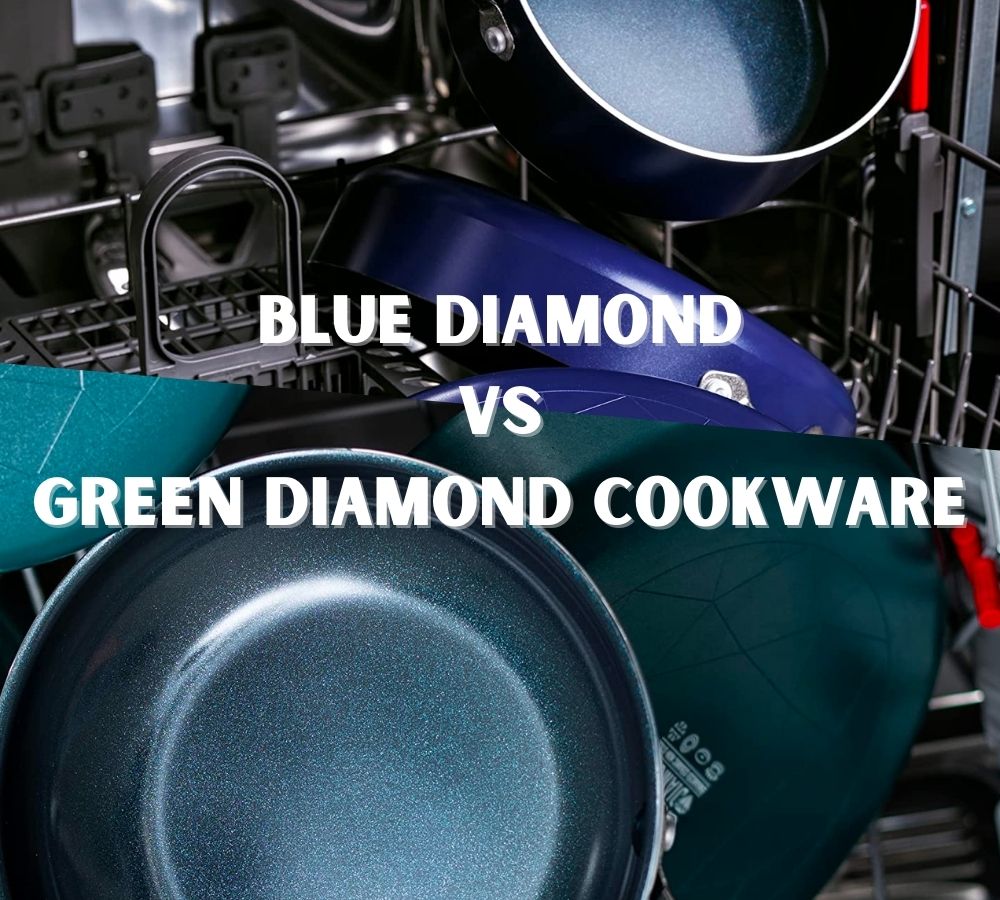Understanding the Difference: Pizza Pan vs Pizza Stone – What’s the Difference?
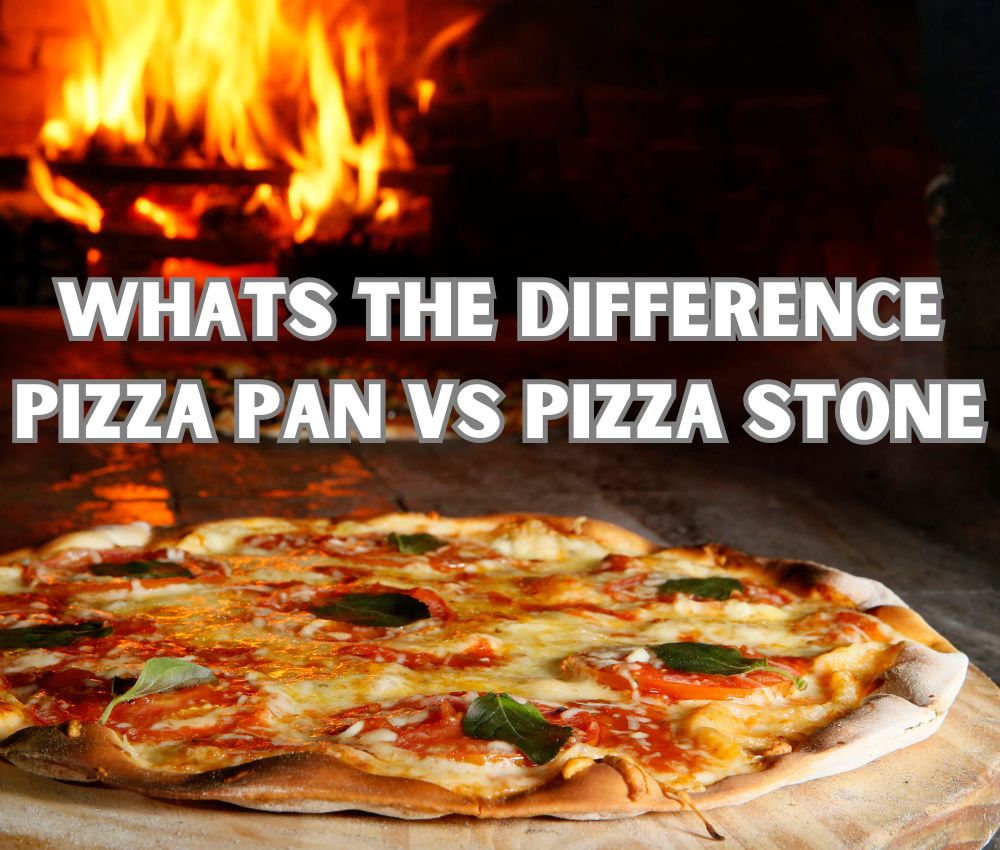
Whats the difference pizza pan vs pizza stone. When making homemade pizza, choosing the proper cooking method is crucial in achieving the perfect crust and taste. Two popular options for cooking pizza are pizza pans and pizza stones.
While they may appear similar, they vary significantly in how they cook your pizza. This section will delve into the differences between a pizza pan and a pizza stone, equipping you with the knowledge to make an informed decision for your next pizza-making endeavor.
Understanding the difference between a pizza pan and a pizza stone can impact your homemade pizza’s texture, crispiness, cooking time, and maintenance. So, if you’re wondering, “What’s the difference between a pizza pan vs a pizza stone?” keep reading to find out!
Table of Contents
What is a Pizza Pan?
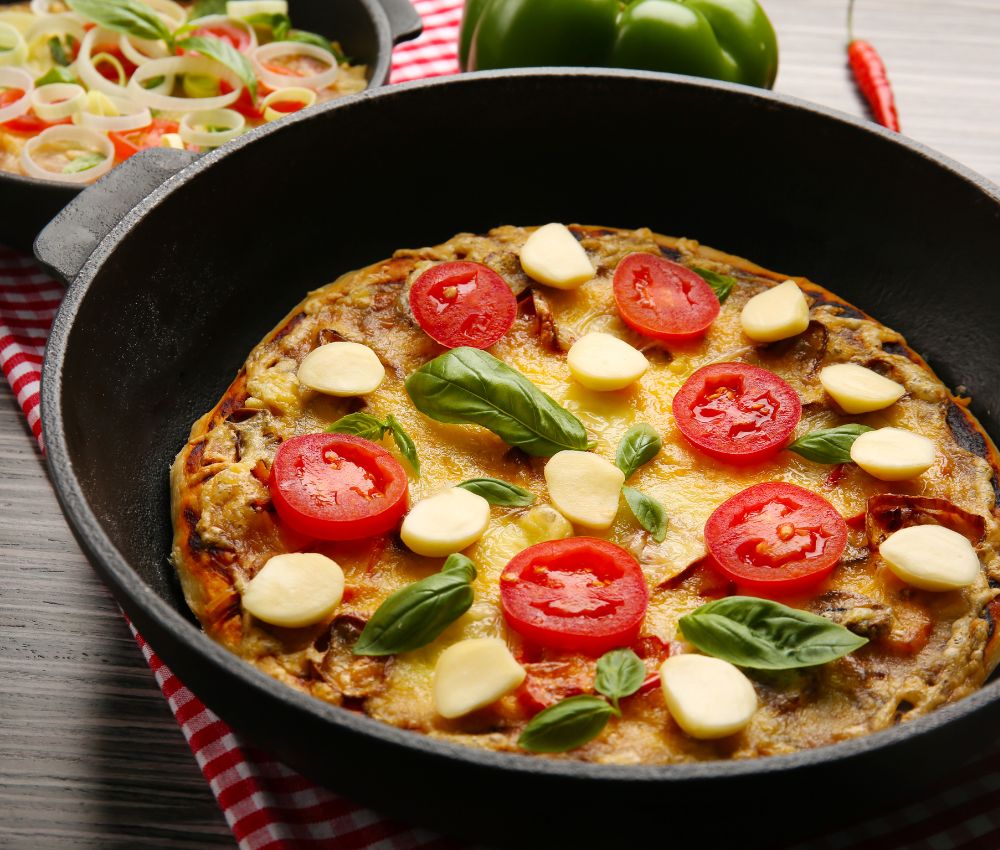
A pizza pan is an excellent option if you prefer to cook or bake your homemade pizza with a pan. Pizza pans are flat, round metal pans with perforations or solid surfaces.
These pans are designed to produce a crispy crust when you bake your pizza in the oven. They are versatile and can also be used for baking cookies or heating frozen foods. Pizza pans are typically coated with a non-stick surface to prevent the dough from sticking, making them an excellent choice for cooking pizza with a pan.
Preheat the oven to the recommended temperature when cooking pizza with a pizza pan. Spread the dough evenly across the pan, add your desired toppings, and then bake in the oven for the recommended time.
Maintaining and cleaning a pizza pan is usually a breeze. Pizza pans with non-stick coatings can be washed with soap and water or in a dishwasher.
What is a Pizza Stone?
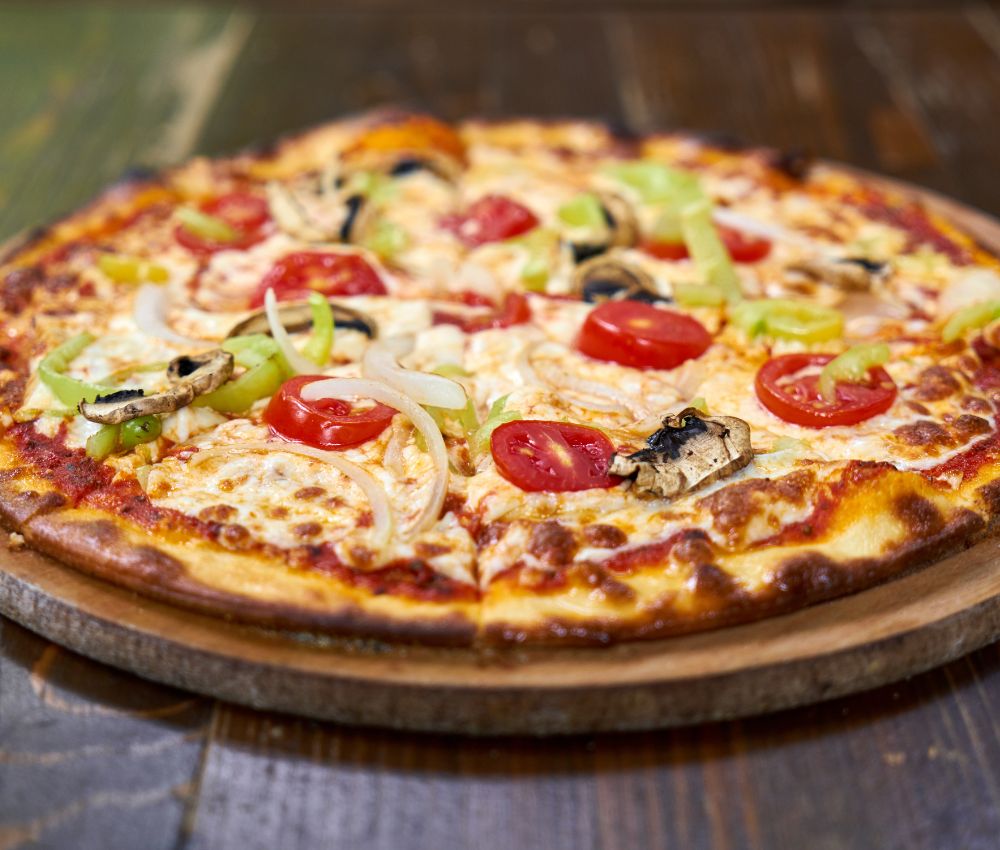
If you are looking for a way to mimic the cooking environment of a traditional brick oven, then a pizza stone might be the perfect solution for you. A pizza stone is a thick, usually round, ceramic, clay, or cordierite slab. Preheating the stone helps create a crispy and evenly cooked crust on your homemade pizza.
The stone absorbs and distributes heat evenly, reducing the crust’s burning or undercooking risk. The pizza stone radiates heat from the bottom, allowing the crust to cook evenly. When you use a pizza stone, it is essential to preheat it to enable it to absorb heat effectively.
If you are new to cooking pizza with a stone, it is worth remembering that it can take longer to cook your pizza than with a pan. The heating time depends on the stone’s thickness and the oven’s temperature. Therefore, you may need to experiment with cooking times to achieve the perfect result.
When using a stone to bake pizza, you can use two methods: placing the pizza directly on the stone or transferring it using a pizza peel. Using either parchment paper or cornmeal is crucial to prevent the pizza from sticking to the stone.
It is worth noting that a pizza stone is for more than just cooking pizza. You can also bake bread cookies or even reheat crispy foods like nachos. They can also be used to impart a smoky flavor to grilled foods.
Key Differences between Pizza Pan and Pizza Stone
When it comes to choosing between a pizza pan and a pizza stone, there are some key differences that you should consider.
The first and most significant difference is in the way they distribute heat. Pizza pans rely on hot air in the oven to cook the pizza, while pizza stones absorb and radiate heat from the bottom. This difference in heat distribution affects the texture and crispiness of the crust. If you prefer a softer crust, a pizza pan may be the better option; however, if you crave a crispy, brick oven-style crust, a pizza stone is the way to go.
The second difference is in heating time and evenness. Pizza pans heat up faster due to their thin material, but pizza stones retain heat for longer, ensuring even cooking throughout the pizza. This heat retention also helps prevent a soggy or undercooked center, which can be problematic when using a pizza pan.
Another difference is in the versatility and other uses. Although pizza pans are primarily used for baking pizzas, they can also be used for other baked goods or reheating frozen foods. Pizza stones, on the other hand, are specifically designed for pizza but can also be used for baking bread cookies or even imparting a smoky flavor to grilled foods.
Finally, maintenance and cleaning are the same. Pizza pans are usually easier to clean as they often come with non-stick coatings. They can be washed with soap and water or in a dishwasher. Pizza stones, however, should never be washed with soap as they can absorb flavors and odors. Instead, they should be scraped clean or wiped with a damp cloth.
Consider these key differences when choosing between a pizza pan and a pizza stone to ensure the best results when making your homemade pizza.
Crust Texture and Crispiness

The type of cookware you choose to use when baking your homemade pizza can significantly impact the texture and crispiness of the crust. If you bake your pizza with a pan, you can expect a softer crust that is slightly chewy, with a less pronounced crispiness. However, if you use a stone to bake your pizza, the crust will turn out crispy on the outside and chewy on the inside, just like a traditional brick oven-style crust.
The heat distribution of a pizza pan relies on hot air circulating in the oven, which ultimately affects the texture and crispiness of the crust. Conversely, a pizza stone absorbs and radiates heat from the bottom, which removes moisture from the dough, resulting in a more traditional brick oven texture. Therefore, choosing between baking pizza with a pan or a stone ultimately depends on preference regarding crust texture and crispiness.
Heating Time and Evenness
Cooking pizza with a pan is quick and easy as it tends to heat up faster due to its thinner material. Depending on the recipe, a pizza cooked in a pan can take 10-20 minutes to bake. However, cooking pizza with a stone is the way to go if you are looking for a more traditional brick oven-style pizza.
Pizza stones require preheating, typically for 30 minutes to an hour, depending on the thickness of the stone. Once preheated, the stone retains heat for longer, ensuring even cooking throughout the pizza. Not only does this help achieve evenly cooked toppings, but it also helps prevent a soggy or undercooked center.
Pizza pans will get you a pizza faster, while a pizza stone requires more time to preheat but produces a more even and consistent bake.
Versatility and Other Uses
While pizza pans are primarily used for baking pizzas, they can be utilized for other baked goods or reheating frozen foods. This makes them a versatile option for those seeking a multipurpose baking tool for their kitchen. They can be used for cooking pizza with a pan, baking pizza with a pan, or even baking cookies and heating frozen foods.
On the other hand, pizza stones are specifically designed for pizza but can also be used for baking bread cookies or even reheating crispy foods like nachos. Using a pizza stone for cooking pizza with a stone or baking pizza with a stone can help create a crispy crust similar to the ones made in traditional brick ovens. Pizza stones can also impart a smoky flavor to grilled foods, making them a versatile option for outdoor cooking enthusiasts.
Maintenance and Cleaning
Regarding maintenance and cleaning, pizza pans are generally easier to clean than pizza stones. Most pizza pans have a non-stick coating that prevents the dough from sticking, making it easy to wipe clean with a damp cloth or wash with soap and water. Some pizza pans are even dishwasher safe, making them hassle-free to maintain.
Pizza stones require more care and attention. Because they are made of porous materials, they can absorb moisture, oil, and other flavors over time. For this reason, it’s recommended that you only use water and a scraper to clean your pizza stone. Never use soap or any other cleaning agents, as it can damage the stone and cause it to crack. If your pizza stone is heavily stained, try using a mixture of baking soda and water to clean it, but be sure to rinse it thoroughly afterward.
When it comes to finding the best pizza pan or pizza stone, it’s essential to read the manufacturer’s instructions for cleaning and maintenance, as they may have specific recommendations for their product. Taking care of your pizza pan or pizza stone will help prolong their lifespan and ensure that your homemade pizza always comes out delicious.
Choosing the Right Option for You

When choosing between a pizza pan and a pizza stone, there are a few factors to consider to ensure that you end up with the perfect homemade pizza. Both options have unique advantages, so thinking about your desired crust texture and crispiness, heating time and evenness, versatility, and maintenance is essential.
A pizza pan may be the right choice if you prefer a softer crust and faster cooking times. Look for the best pizza pan with a non-stick coating for easy cleaning and durable material for even heat distribution. You can use a pizza pan for pizza and baking other goods like cookies and reheating frozen foods.
A pizza stone is the way to go if you crave a crispy brick oven-style crust and are okay with longer heating times. Look for the best pizza stone made of ceramic, clay, or cordierite material that can withstand high temperatures and retain heat for even cooking throughout your pizza. Pizza stones are also versatile and can be used for baking bread cookies or even reheating crispy foods like nachos.
Ultimately, deciding between a pizza pan and a pizza stone comes down to your preferences and culinary needs. Experiment with both options and find the method that suits you best. Happy pizza making!
Conclusion
Understanding the difference between a pizza pan and a pizza stone is crucial in achieving the perfect homemade pizza. Both options have unique advantages, ultimately regarding personal preference and culinary needs. A pizza pan may be the right choice if you prefer a softer crust and faster cooking times. On the other hand, if you crave a crispy brick oven-style crust and are okay with longer heating times, a pizza stone is the way to go. Experiment with both methods and find the one that suits your taste preferences. Remember, the crust texture and crispiness, heating time and evenness, versatility, and maintenance should all be considered when choosing between a pizza pan and a pizza stone.
